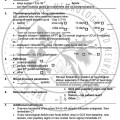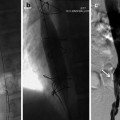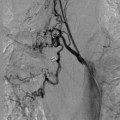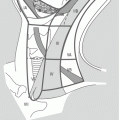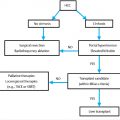The use of antithrombotic agents is increasing in infants, children and adolescents. The more recent routine inclusion of children in FDA-monitored clinical trials has propelled the rapid accumulation of safety and efficacy data on these agents in pediatric patients. Antithrombotic agents in current use include indirect or antithrombin-dependent anticoagulants, intravenous direct thrombin inhibitors, direct oral anticoagulants (DOACs) targeting thrombin or factor Xa, antiplatelet agents and thrombolytic therapies. Each class of antithrombotic agent has distinct mechanisms of action, clearance routes, half-lives, safety and dosing. Anticoagulant efficacy is dependent upon the specific clinical indication and stability of the pediatric patient. Duration of anticoagulant course is also dependent upon the clinical indication as well as rate of thrombus resolution. This manuscript reviews the mechanism of action, route of administration, route of clearance and plasma half-life for the antithrombotic agents in current use in children. Use of anticoagulation in the context of thrombolytic therapy is discussed.
Introduction
Antithrombotic therapies are increasingly prescribed by pediatric inpatient and outpatient services due to the increased rate of venous and arterial thrombi in infants, children and adolescents, in large measure associated with advances in pediatric intensive supportive care. For decades, unfractionated heparin, warfarin, and low molecular weight heparins have been the standard of care options for anticoagulation in pediatrics with limited data guiding use ( ). Direct thrombin inhibitors (DTIs) and oral direct inhibitors of thrombin and factor Xa have been introduced over the past 25 years. With the more recent advent of routine inclusion of children in FDA-monitored clinical trials, the availability of data on safety, efficacy and dosing recommendations for anticoagulant use in infants, children and adolescents has increased enormously. This has provided clinicians with choices with which to individualize antithrombotic therapy. There are many considerations for choice of antithrombotic agent which this manuscript will review.
Clot Age and Associated Purpose of Anticoagulation
The acute phase of a clot is defined as the first 14 days. During this period the clot is soft and is not yet adherent to the surrounding blood vessel wall. The purpose of anticoagulation in the acute phase is to stop progression of the clot and especially to greatly reduce the risk of embolization, which can occur in up to 50% of cases of untreated proximal venous thromboembolism ( ). During the acute phase of venous thromboembolism clot dissolution is usually easily performed using mechanical or pharmacological thrombolysis. The subacute phase of a clot is classically from 14 to 28 days. During this time the clot is beginning to retract and fibrose, adhering to the endothelial surface. Spontaneous embolization becomes uncommon. Thrombolysis can still be performed but is more difficult. The purpose of anticoagulation in the subacute phase of a clot is to reduce the chance of reactivation of the original thrombus ( ). The chronic phase of a clot is classically beyond 28 days. A chronic clot is organized and adherent to endothelium and is unlikely to embolize. Recent advances in thrombolytic techniques have rendered chronic clots susceptible to thrombolysis, but this is less often successful than in acute clots. The boundary between subacute and chronic clot is ambiguous. In a meta-analysis of 5 randomized clinical trials, thrombus recurrence in adults was greater in those treated for 4-6 weeks, compared with patients treated for 3 months of more ( ). Recurrence in patients treated for 4-6 weeks tended to be within the first 6 months off anticoagulation, and for lower extremity deep vein thrombosis, in the same leg, suggesting that persistent thrombi treated less than 3 months had a higher rate of reactivation ( , ). These findings led to the adult recommendation that patients with venous thrombosis be treated either for 3 months or indefinitely ( ). Thus, the subacute period, during which continued anticoagulation prevents reactivation of the primary VTE extends to 3 months, but probably not longer. In children, the KidsDOTT trial, comparing anticoagulation duration for first episode provoked VTE between 6 and 12 weeks showed no difference in recurrence rate, suggesting that the subacute period for children extends from 14 days to 6 weeks ( ). The chronic phase is one in which the original clot is dormant and the goal is prevention of a new thrombotic event in those with a genetic, biochemical or anatomic predisposition. The chronic phase extends variably from 1 to 3 months onward ( ).
Classes of Anticoagulants
Classes of anticoagulants, mechanisms, route of administration, route of excretion and plasma half-lives are displayed on Table 1 ( , ). There currently are 5 classes of antithrombotic agents. The antithrombin dependent pentasaccharides, including unfractionated heparin (UH), low molecular weight heparin (LMWH), and fondaparinux act by accelerating the physiological anticoagulant effect of antithrombin ( ). UH accelerates antithrombin mediated inactivation of both thrombin and factor Xa, while the effect of LMWH (enoxaparin, dalteparin, tinzaparin) is on factor Xa alone. Fondaparinux, comprised of the synthetic pentasaccharide which forms the minimal molecular configuration to interact with antithrombin, has minimal interaction with other proteins ( ). Laboratory investigations have determined multiple anti-inflammatory effects of heparins, but their clinical impact on inflammatory disease states has been more difficult to objectively measure ( , ). Direct thrombin inhibitors, including bivalirudin and argatroban, are given by continuous intravenous infusion and have ultrashort half-lives ( ). Direct oral anticoagulants (DOACs) which include direct inhibitors of thrombin (dabigatran) and factor Xa (rivaroxaban, apixaban and edoxaban) are being increasingly adopted after a short initial course of a heparin due to their ease of administration, decreased bleeding rate and efficacy comparable to heparin and warfarin ( ). Warfarin acts by decreasing procoagulants upstream of thrombin generation. Warfarin is marked by an extremely long half-life, requirement for ongoing laboratory monitoring of PT/INR and interactions with many foods and drugs, making this extremely effective drug sometimes difficult to titrate in children ( ). Platelet inhibitors in common use include aspirin and clopidogrel. Aspirin irreversibly acetylates prostaglandin H-synthase-1 which irreversibly inhibits cyclooxygenase (COX-1) preventing the conversion of arachidonic acid to thromboxane and prostacyclin ( ). Clopidogrel works by binding irreversibly to the platelet P2Y12 receptor, inhibiting ADP-mediated platelet activation and aggregation ( ). With both agents, the plasma drug clearance is not relevant to antithrombotic effect as the platelet effect lasts for the life of the platelets. Platelets circulate in plasma for 10 days, but after 4-7 days there are enough new platelets circulating to mediate normal platelet function.
| Class | Mechanism | Route Administration | Route Clearance | Plasma Half-Life |
|---|---|---|---|---|
| AT-dependent pentasaccharides: UH, LMWH, Fondaparinux ( , , , ) | Acceleration of AT-dependent inhibition of factors Xa and/or IIa | IV, SubQ | UH: hepatic LMWH/Fondaparinux: renal | UH: 25-60 min * LMWH: 4 hr Fondaparinux: 17-21 hr |
| IV Direct Thrombin Inhibitors: Argatroban, Bivalirudin ( , ) | Direct inhibition of factor IIa | IV | Argatroban: hepatic CYP 3A4 pathway Bivalirudin: renal | Argatroban: 45 min Bivalirudin: 25-30 min |
| Direct acting Oral Anticoagulants (DOACS): Rivaroxaban, Apixaban, Edoxaban, Dabigatran ( ) | Competitive, reversible direct inhibitor of factors Xa (rivaroxaban, apixaban, endoxaban) or IIa (dabigatran) | Oral € | Rivaroxaban: Renal, Feces Apixaban: Hepatic, Feces, Renal Edoxaban: Renal Dabigatran: Renal | Rivaroxaban: Adults 5-9 hr, Infants < 6 mos: 1.6 hr; ≥6 mos, < 2 yrs: 1.9 hr; ≥2 < 13 yrs: 3 hrs; ≥13 yrs 4.2 hrs Apixaban: 12 hr Edoxaban: 10-14 hr Dabigatran: Adults 12-17 hr, Children 12-14 hr |
| Warfarin ( ) | Inhibition of gamma carboxylation and secretion of Vit K-dependent coagulation proteins | Oral | Hepatic metabolism, renal clearance | 35 hr |
| Aspirin ( ) | Irreversible platelet and endothelial cell inhibition of cyclo-oxygenase | Oral | Renal | Full platelet function recovery by 7 day + |
| Clopidogrel ( , ) | binds specifically and irreversibly to the platelet P2RY12 purinergic receptor, inhibiting ADP-mediated platelet activation and aggregation | Oral | Renal, Feces | Full platelet function recovery by 7 day + |
⁎ UH clearance is developmentally dependent and ranges from 25 minutes in the full term infant to 60 minutes in children and adults.
+ Aspirin and clopidogrel irreversibly bind platelet receptors. Elimination of drug effect is dependent on physiological platelet replacement; plasma drug levels are not clinically relevant.
€ For Rivaroxaban, there is an oral suspension for infants and young children; for Dabigatran there are oral pellets for infants and young children and capsules for children 8 years and older; apixaban does not currently have an alternative to the capsules for infants and young children.
Pros of Specific Anticoagulant Classes
The heparins appear to have anti-inflammatory properties useful during site-directed thrombolysis where they may decrease the propensity to early postprocedure rethrombosis; heparins can be reversed with protamine ( , ). The anticoagulants administered by intravenous infusion, including UH, argatroban and bivalirudin, can be more readily controlled owing to their very short half-life. Bivalirudin has been used to treat thromboembolism in children and has been reported to be associated with a more rapid clot dissolution ( , ). The DOACs are very popular with patients due to convenient oral administration and no requirement for laboratory monitoring. Warfarin is effective in many conditions resistant to other anticoagulants, such as thrombosis associated with prosthetic cardiac valves and triple positive antiphospholipid antibody syndromes (APAS) ( ).
Cons of Specific Anticoagulant Classes
UH cannot be used chronically due to its osteoporotic effects ( ). It is also difficult to titrate in settings of intense inflammation due to abundant nonspecific protein binding. LMWH presents a burden to patients due to frequent subcutaneous injections. The intravenous DTIs are difficult to monitor by aPTT or PT and often require the dilute thrombin time (dTT) that is not universally available ( , ). DOACS have decreased efficacy compared to warfarin in triple positive APAS ( ). Warfarin requires long-term laboratory monitoring, usually monthly and has multiple pharmacological and dietary interactions that alter its efficacy.
Attention must be given to route of excretion and associated organ dysfunction in the individual patient. Thus, hepatically excreted anticoagulants are favored for children with renal impairment, and renally excreted drugs are preferred for children with hepatic dysfunction. Warfarin may also be titrated if gastrointestinal absorption is impaired and DOAC standard dosing does not achieve target effect.
Special Issues for Children
A few developmental issues of the newborn affect anticoagulation ( ). The newborn infant has a prolonged baseline aPTT due to low contact factors. The aPTT will prolong with heparin leading to overestimation of heparin effect. The newborn infant has a physiologically low antithrombin level; average doses of UH are 33-34 IU/kg/hr but up to 50 IU/kg/hr are often necessary to achieve a therapeutic anti-Xa activity level ( , ). Due to low levels of plasminogen at birth, supplementation may be necessary to achieve thrombolysis with tPA.
LWMH injections are painful leaving large bruises on little children and limited prolonged usage. DOACs are very attractive as an oral agent. However, gastrointestinal absorption issues limit their usefulness in many children. Warfarin inhibits the function of vitamin K; vitamin K levels and consequent warfarin effect are easily promoted or impaired by drugs, especially antibiotics and anticonvulsants, and dietary inconsistencies that are common in young children. The use of a small supplementary dose of vitamin K (100 micrograms) daily can decrease variations in PT/INR ( ).
Children have accelerated pharmacokinetics overall, and often require more frequent drug dosing. It is critical to know the excretion route of anticoagulant agents and the implications of altered renal or hepatic function in specific pediatric patients.
Adolescent females often manifest menorrhagia on anticoagulation therapy. Rivaroxaban increases menstrual flow more than apixaban ( ).
Infants, children and adolescents have tolerated DOACs with no increase in bleeding or other adverse events, as shown in 4 randomized clinical trials displayed on Table 2 ( ).
| StudyTab | Diversity | 2 0 Prev | Einstein Jr | Universe | |||
|---|---|---|---|---|---|---|---|
| Drug | Dabigatran | SOC | Dabigatran | Rivaroxaban | SOC | Rivaroxaban | ASA |
| N | 176 | 90 | 203 | 329 | 162 | 76 | 34 |
| Total AEs | 77% | 67% | 75% | 83% | 77% | 87% | 85% |
| Death | 0% | 2% | 0% | 1% | 0% | 0% | 0% |
| Tx discount | 7% | 3% | 6% | 1% | 0% | 4% | 0% |
| SAEs | 13% | 20% | 12% | – | – | 32% | 24% |
| GI AE | 25% | 4% | 37% | 33% | 28% | 33% | 26% |
| Total bleed | 22% | 24% | 20% | – | – | 36% | 41% |
| Major bld | 2% | 2% | 2% | 0% | 1% | 1% | 0% |
| CRNM | 1% | 1% | 1% | 3% | 1% | 7% | 9% |
| GI | 5% | 0% | 2% | 1% | 1% | 1% | 3% |
| Epistaxis | 5% | 7% | 6% | 12% | 11% | 9% | 9% |
| Bruising | 3% | 7% | 8% | 4% | 1% | 30% | 30% |
| Menorrhagia | – | – | – | 8% | 4% | – | – |
Stay updated, free articles. Join our Telegram channel

Full access? Get Clinical Tree




